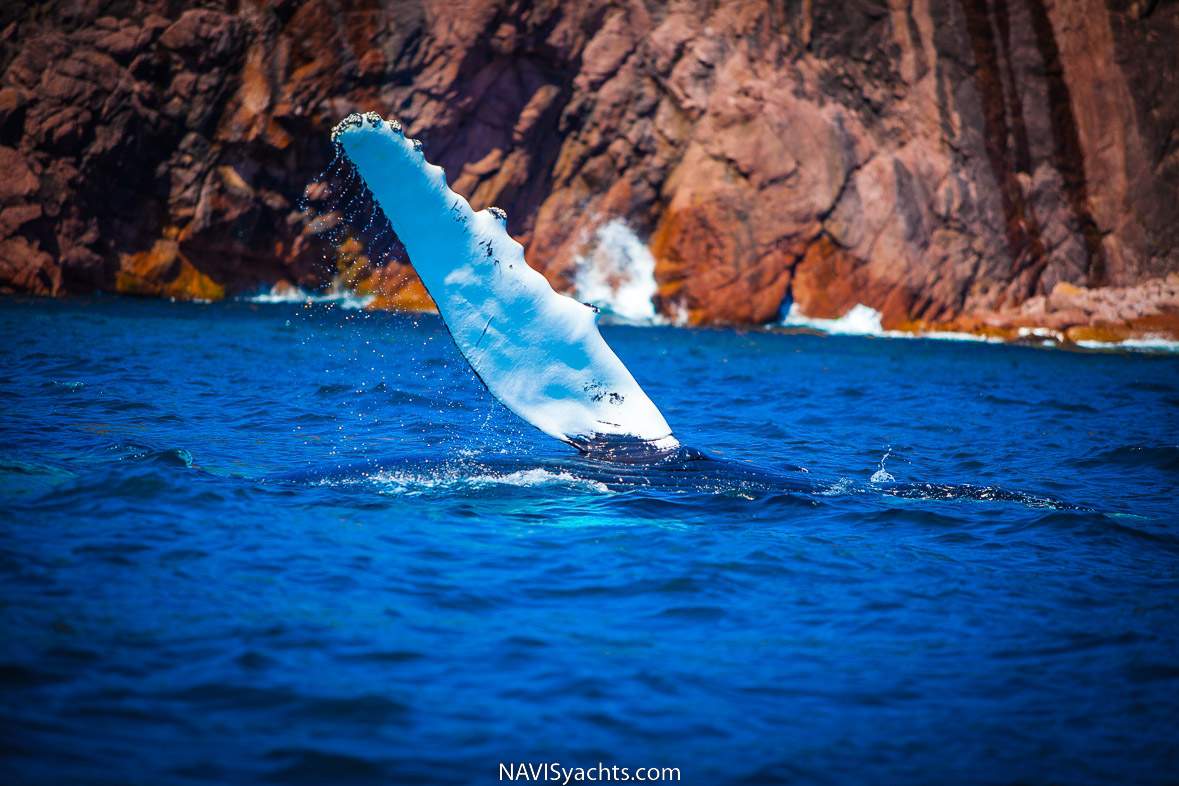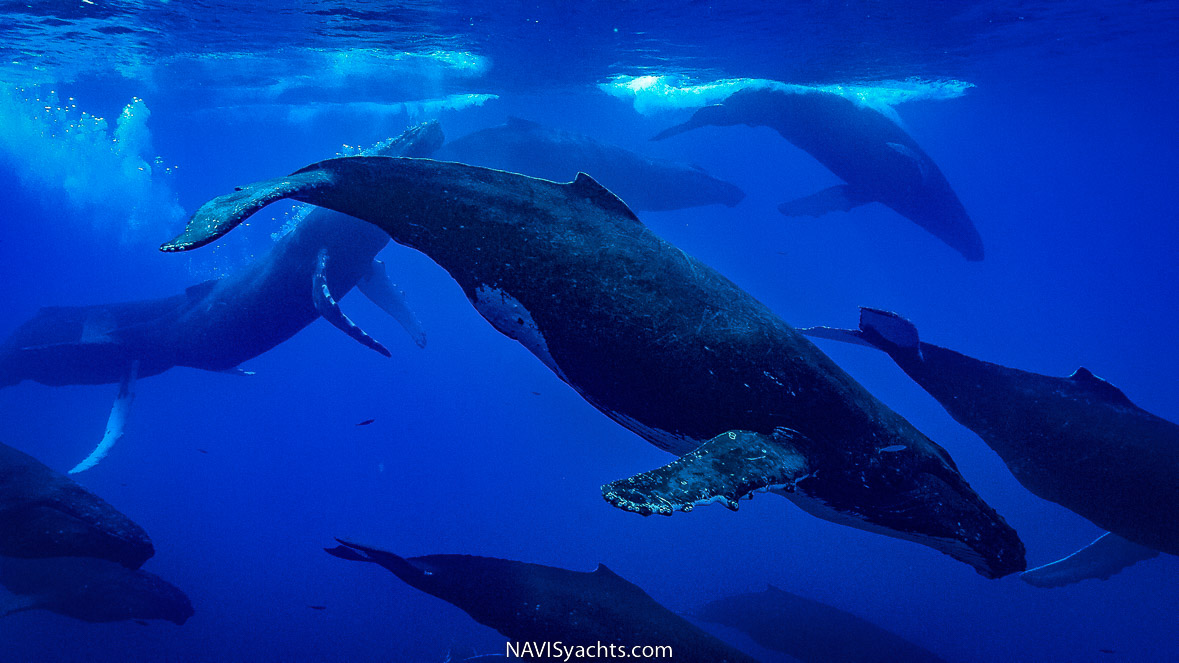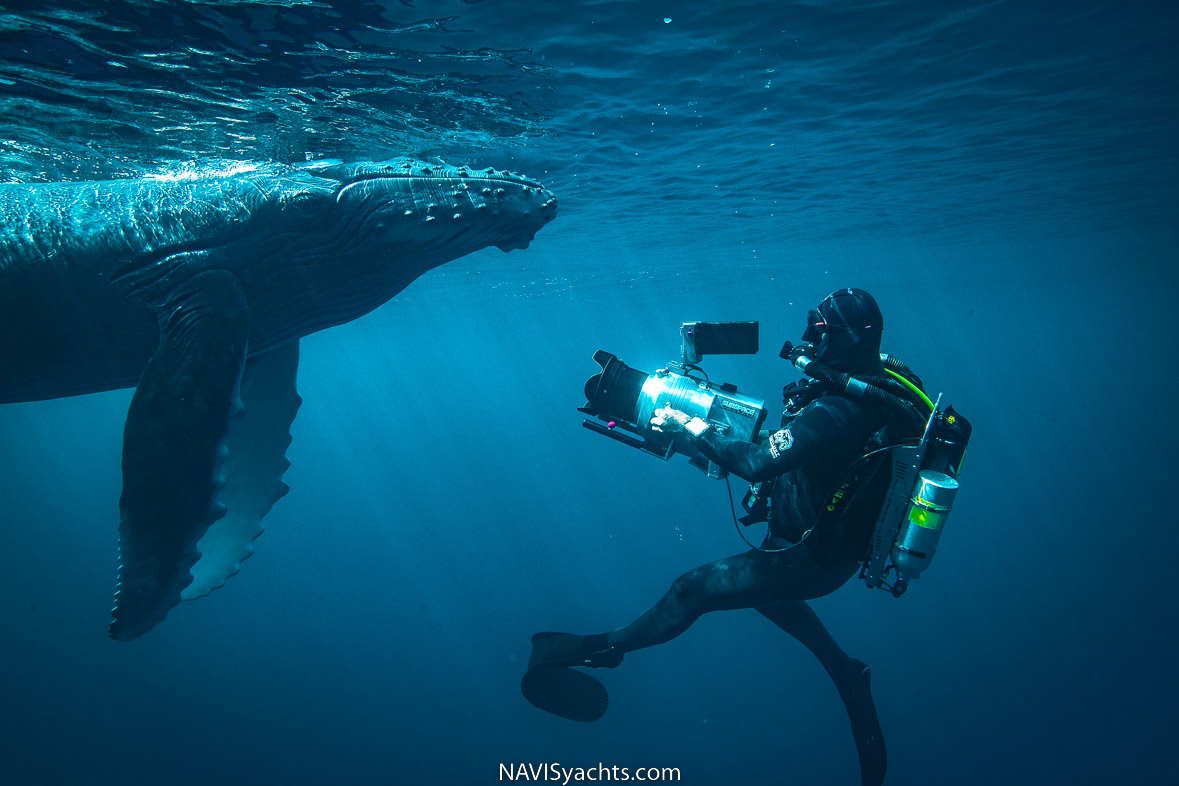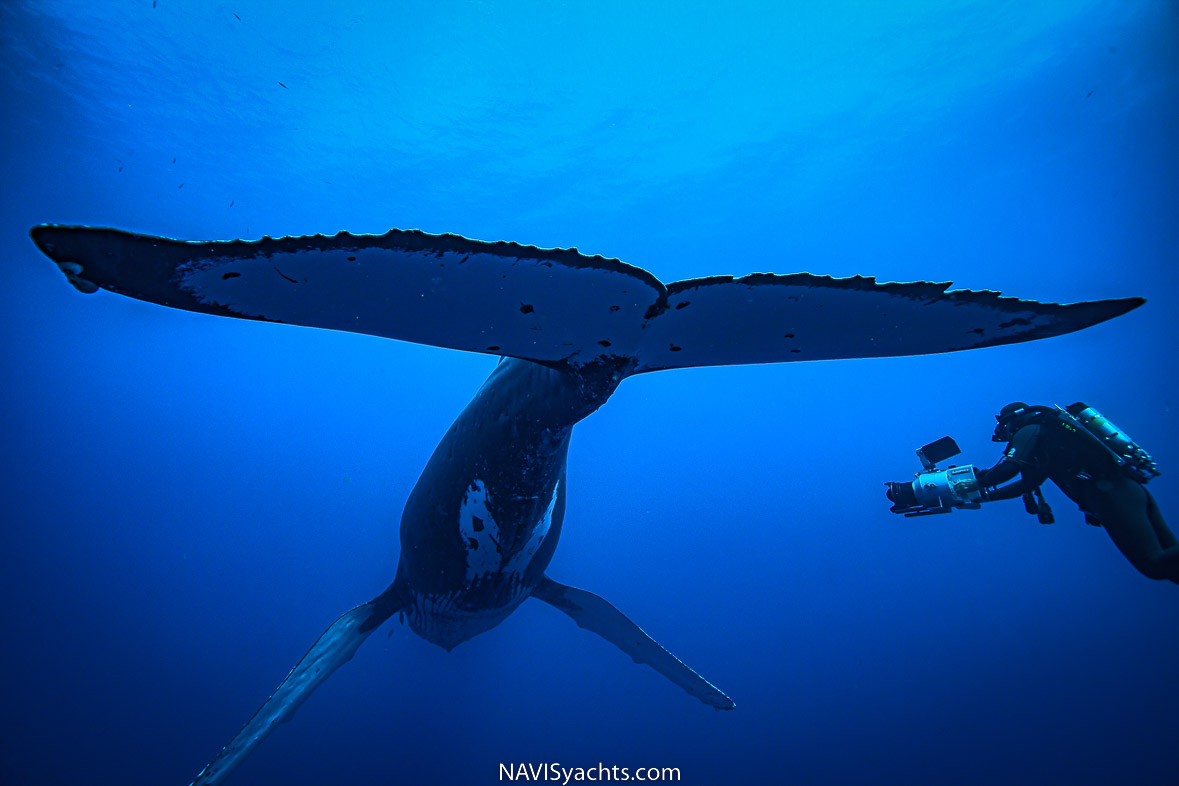An accomplished underwater videographer, Didier Noirot has a noteworthy CV detailing 44 years behind the lens. Didier has worked with Jacques Cousteau, National Geographic, Disney Nature, John Jackson (La Bête du Natal), and Jacques Perrin (Ocean), among others, earning Emmy Awards for the BBC favorite, Blue Planet, and the documentary One Life. Passionate about the ocean and the marine life it supports, Didier dedicates his time and expertise as President and co-founder of the philanthropic ocean education organization, The Balthazar Project.
I was about 10 years old when I first saw a whale. It was not at sea, but at the municipal library in my village, on the cover of an illustrated version of the book, Moby Dick. The image terrified me! It represented the white whale that crushed the fisherman’s rowboat in its jaws, a harpooner standing as he could to the teeth of the monster. If there was one animal I never wanted to meet, it was this one. I never believed that years later, I would spend part of my life following whales and filming them.
During a photoshoot in the late 90s, I approached a large cetacean for the first time. I created underwater images of humpback whales while diving in Rurutu in the South Pacific.

Rurutu is not the French Polynesia of postcards. This ancient volcano of 400 meters in height plunges directly into the sea, leaving very little room for white, sandy beaches. The long swell from southwest tirelessly sweeps the narrow reef, making for difficult access.
The scent of the island reminds me of wild islands in the Pacific where the smell of burnt coconut bark mixes with that of sea air.
In the Southern Hemisphere, humpback whales spend the summer months from December to April in Antarctica, feeding on the abundant krill. During this time, they replenish their fat reserves in preparation for their journey of several thousand kilometers to the north, towards the islands of the South Pacific and the Indian Oceans, to mate or give birth. In the Northern Hemisphere, where the seasons are reversed, whales that spend their summers in the Bering Sea or in the North Atlantic descend into the warmer waters of Hawaii and the West Indies in winter.
I returned to Rurutu several times to film whales. One of these shoots, about a decade after my first visit, particularly marked me. Rurutu, a small island about 10 kilometers long, usually sees only a dozen whales at the most during the winter.

That year, on the morning of my first dive, I spotted a group of three whales circling around the narrow island along the reef. My plan was to get into the water on the whale’s route, a few hundred meters forward, to find a coral head big enough to hide in. It was there I would wait for them in water about twenty meters deep.
My wait was not long. The whales came upon me, looping out to sea to avoid me. I thought I was invisible but I was mistaken! Whales have an extremely sophisticated echolocation system. Their brains draw a precise map of the background, and I am sure that my head, barely visible from behind the coral, must have appeared in bright color on their radar screens.
After completing their loop, the whales returned to their course near the coast. One of them, as if guided by an instinct of curiosity, came straight at me. He was thinner and his belly was practically all white.

I started to go up since I knew that this first encounter would only be a contact, but the whale swam so close that I noticed small details about his body. As in fingers on a hand, its right pectoral fin was missing its tip, and the whole of this fin had bite marks. Other larger marks were visible on his tail, the right side of which had been amputated. What had happened?
This whale must have been attacked by orcas, likely just a calf at the time, still dependent on its mother. The orcas, on that day, did not succeed in their attack, leaving only the scars of their violent aggression on the whale’s exposed right flank. It is said that chances of success for such attacks in the wild are a little less than fifty percent, a proportion similar to that found in other large predators, such as great white sharks on seals, for example.
The following days allowed me to strengthen my bond with this whale. I even gave it a name, Manchotte, because in French, a Manchot is someone who is missing an arm or a hand.
I found Manchotte every day, sometimes alone, sometimes accompanied by one or more other whales. Day by day, I forged a real bond. He accepted me as I moved in closer and closer, until one day, he allowed me a most memorable moment as a diver. It happened during his sleep cycle.
Rest periods, which last about three hours, consist of static dives of about ten to fifteen minutes followed by five surface breaths. At the beginning of each dive, the whale takes a motionless position, the head lower than the tail at a depth of about thirty meters. During this immersion, as its air supply becomes depleted, the whale takes an increasingly horizontal position, ending in about ten meters of water with its head higher than its tail.
The onset of sleep is the appropriate time to film the tail. I always make my approaches from the back of the whale, positioning myself in the blind spot of its detection organs. I swam towards him, staying at the same depth, always as quietly as possible. As I closed the gap between this sleeping giant and myself, I felt an impression of grandeur. I also felt very small in front of the vast, four-meter wingspan of his tail.
First of all, I wondered what the tail was made of. Did it resemble hard leather or was it rather soft? When I was close enough, I marveled at every minute detail. On its top, I saw a small remora that came up and down in search of food. There were shells firmly hung here and there, but the most surprising thing was to see the finesse of the outer edge. It looked like lace with perforations in some places, reminding us that, when very young, calves are subjected to the aggressions of cookiecutter sharks. These small sharks feed on the outer layers of the epidermis of whales, especially when young.
That particular day, I approached Manchotte head-on. It was much more difficult because I was no longer in his blind spot with regard to his eyes or his echo sonar, but right in front of the most advanced detection instruments in the world.
No need to hide. You have to play fair. I showed him my relationship of trust so that he accepted me. There was no other way. That day, it was he who would invite me, or not, into his world.
I immersed myself about thirty meters from him, just slightly above. He saw me coming slowly. I descended weightlessly, without swimming. His eyes looked at me and his head turned as he approached me. Only a few meters away, Manchotte loomed large in front of me, in massive, heart-quickening proportions. The images of Moby Dick suddenly appeared in my head. Would I end my day like the harpooner?

I found I was so immediately close that I could no longer see his eyes, too far away on the sides. I observed, from very close range, the bumps on the rostrum. Small fish rummaged between the rostrum, while a multitude of small crabs wandered everywhere. In a few weeks, this incredible little world would disappear, the warm water of Polynesia having removed this life usually living in the icy seas of the great south. The whale would, at that point, have a new, smooth look, no longer encumbered by all the shells that slowed him down. He would thus swim faster on his long route to Antarctica. Having eaten nothing for months, every effort to conserve his energy and body stores would become extremely important.
Less than fifty centimeters from his muzzle, I was then so close I could touch him. A decidedly exciting first for me, I preferred not to do so. Instead, I kept my position with a distance of respect. I relished that endless face-to-face with long seconds spent in front of him. It made me wonder if such a meeting might one day change the image that whales have of humankind.
Years later, I went to film coral in Fiji and saw a humpback whale diving in the distance. His tail bore a mark similar to that of Manchotte, but I was too far away to be sure. Was it Manchotte? Would he have recognized me? Would he have come to me underwater? It would have been very interesting to know. I do not despair of meeting him again, and continue to hope for such an emotional encounter, as I still have many adventurous years of diving in front of me.
Today, whale watching is an increasingly important commercial activity around the world. The growing number of boats is an annoyance for marine mammals. After more than 40 years on the oceans, I have noticed that the best observations are made when the boat is stopped and the engine is off, inviting the whales to come to meet us. Nature will always grant us these magical moments.
The secret to success is patience.







Photos: Didier Noirot | Words: Didier Noirot, KL Turner



